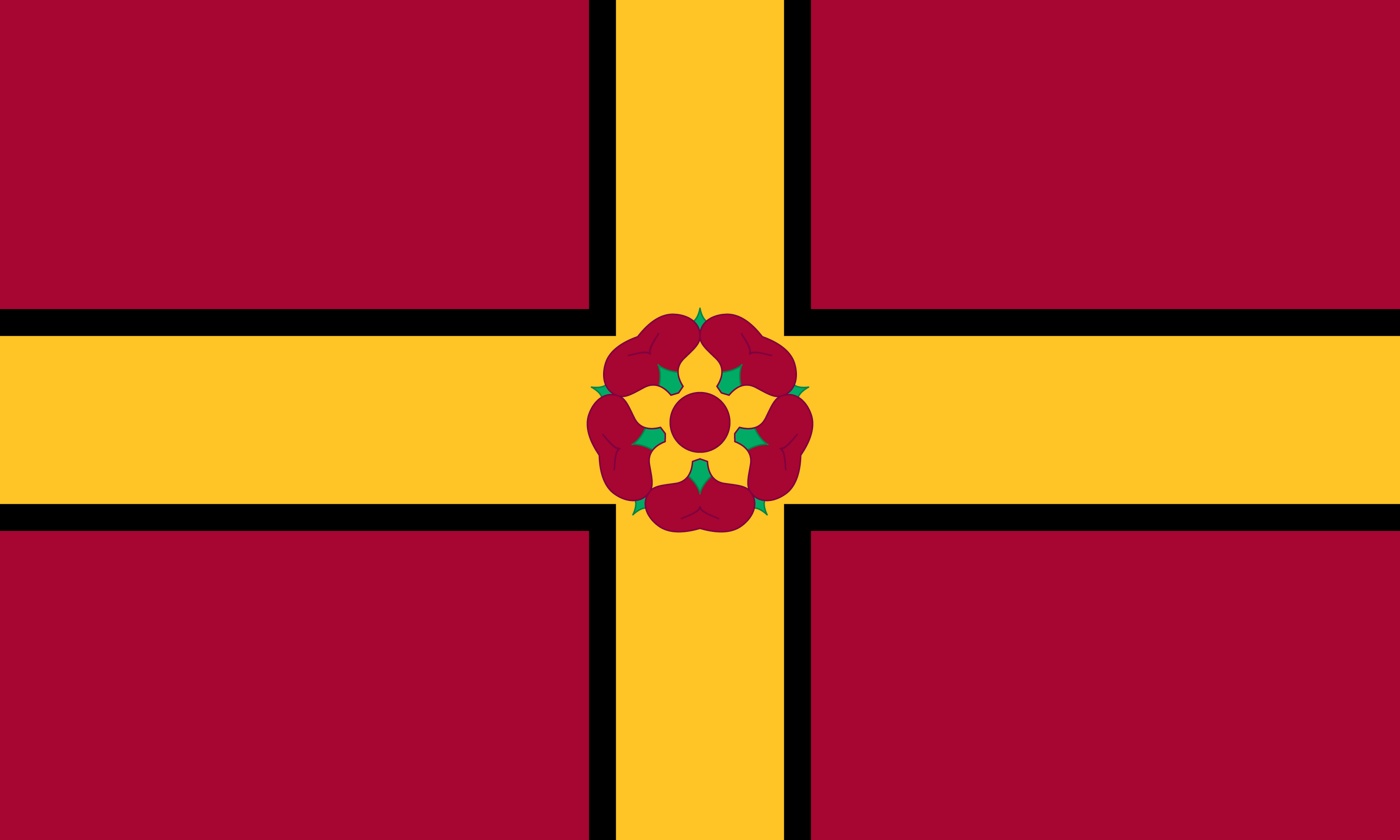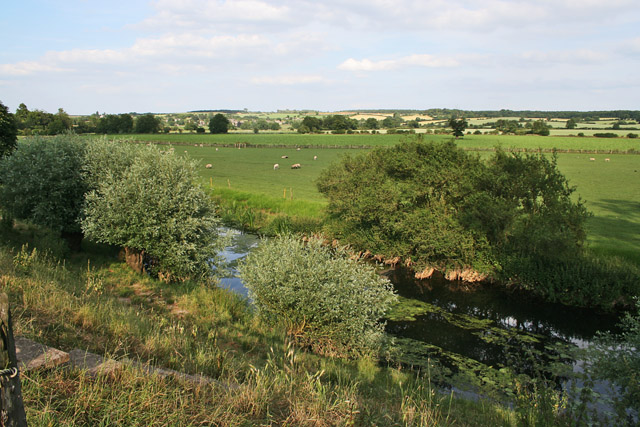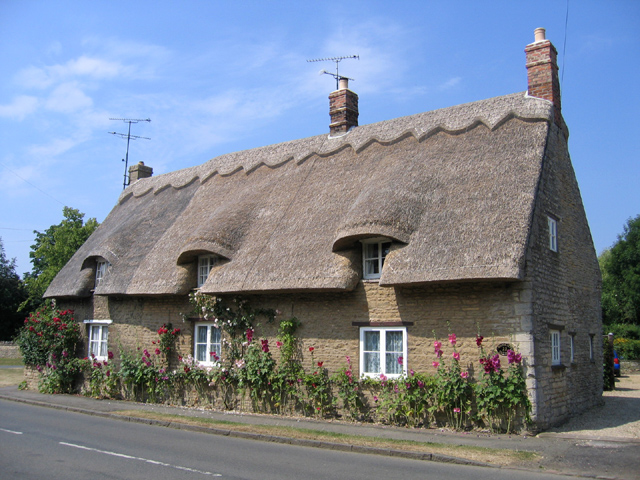Search the Gazetteer
Are the results not as expected? Modify your search term or change the scope to refine your search.
Results for a place that exactly matches ...
Northamptonshire
Northamptonshire, England
 Northamptonshire is an inland county in the Midlands, commonly known as "The Rose of the Shires". The south-west of the county remains a rural area, save for the small towns of Towcester, Daventry and Brackley. Northampton itself lies on the River Nene, a traditional market town surrounded by modern suburbs. To its north-east, the industrial towns of Rushden, Wellingborough, Kettering and Corby stretch across the county. North-east of these towns the county is almost entirely rural, the only sizeable settlement being the ancient market town of Oundle. The Soke of Peterborough forms the far north-east of the county, its origin in the Mid-Saxon period. The ancient cathedral city of Peterborough is the heart of the Soke. The Geddington Eleanor Cross and the remains of Fotheringhay Castle are among the county's historical gems.
Northamptonshire is an inland county in the Midlands, commonly known as "The Rose of the Shires". The south-west of the county remains a rural area, save for the small towns of Towcester, Daventry and Brackley. Northampton itself lies on the River Nene, a traditional market town surrounded by modern suburbs. To its north-east, the industrial towns of Rushden, Wellingborough, Kettering and Corby stretch across the county. North-east of these towns the county is almost entirely rural, the only sizeable settlement being the ancient market town of Oundle. The Soke of Peterborough forms the far north-east of the county, its origin in the Mid-Saxon period. The ancient cathedral city of Peterborough is the heart of the Soke. The Geddington Eleanor Cross and the remains of Fotheringhay Castle are among the county's historical gems.Portrait of Northamptonshire
Place Type: Historic County
Lat, Long: 52.305291,-0.911244
Grid Reference: SP743680
Country: England
GBPNID: 305758
Entry Type: Main listing (P)
URL: https://gazetteer.org.uk/place/Northamptonshire
 Explore Northamptonshire on Wikishire
Explore Northamptonshire on WikishireThe south-west of Northamptonshire is a rural area with three small towns. Towcester stands on Watling Street and is the site of the Roman town of Lactodorum. Today it is famous for its racecourse. Daventry is a market town with many historic buildings including the 18th-century Holy Cross Church and Moot Hall. Arbury Hill (738 feet), the county top, lies six miles south-west of Daventry with fine views over Warwickshire and Northamptonshire. Canons Ashby House (NT) is a Elizabethan manor house about 11 miles south of Daventry. It was built on the site of the former Canons Ashby Priory of which the priory church of St Mary survives. Northamptonshire has a long association with motor sports, the village of Silverstone hosting the famous Formula 1 motor racing track. The town of Brackley is close to the circuit and some industry related to Formula One is based in the town.

Watling Street, Towcester
To the north-east of this area lies the county town. Northampton stands on the River Nene and is a mixture of old and new; the town is an ancient borough and the town centre has many historic buildings, but Northampton was declared a “new town” in 1968 and consequently all around it has sprung modern suburbs. Althorp, north-west of the town, is a stately home and estate held by the Spencer family for more than 500 years. It was the childhood home, and now burial place, of Diana, Princess of Wales. North of Northampton is Lamport Hall. Developed from a Tudor manor house, the hall is best known for its classical frontage. The Hall’s fine rooms, including the High Room of 1655 and 18th-century library, are filled with a wealth of outstanding furniture, books, china and paintings collected by the Isham family over four centuries. Castle Ashby House, a country house south-east of Northampton, is one of the seats of the Marquess of Northampton.
To the north-east of the county town, a group of large towns stretch across the county from south to north. Rushden was a centre of the shoemaking industry. A few shoemaking companies survive but Rushden has diversified into many industries. Wellingborough is believed to have been founded in the early 6th century. The town stands on the hills adjoining the flood plain of the River Nene and is surrounded by five wells. The town is noted as a centre of high-performance engineering. Kettering is a market town on the Ise. Kettering's economy was built on the boot and shoe industry, but is now based on service and distribution industries. It contains Wicksteed Park, Britain's second oldest theme park (opened 1921). Corby was designated a new town in 1950 and is now a sizeable town, though the steel industry from which it grew has long since been replaced by other industries.
In the village of Geddington, to the south of Corby, is the Geddington Eleanor Cross. In 1290, Eleanor of Castile, wife of Edward I, died in Harby, Nottinghamshire. Edward set up an elaborate commemorative cross at each location where Eleanor's cortege rested for the night on its journey back to London. On the night of 6 December the procession stopped in Geddington. At Rushton is the Triangular Lodge (EH), designed around 1593 by Sir Thomas Tresham as a protestation of his Catholic faith. His belief in the Holy Trinity is represented everywhere in the Lodge by the number three. It has three walls 33 feet long, each with three triangular windows and surmounted by three gargoyles. At Gretton, north of Corby, is Kirby Hall (EH), a leading and early example of the Elizabethan prodigy house.

Kirby Hall
To the north-east of the towns in the county's centre, the county is almost entirely rural. The only sizeable settlement in this area is the ancient market town of Oundle, a pretty place on the River Nene. In the nearby village of Fotheringhay are the remains of Fotheringhay Castle. It was a favoured residence of the Dukes of York, and King Richard III was born here in 1452. It was also the final place of imprisonment of Mary, Queen of Scots, who was tried and executed in the castle in 1587. The castle was dismantled in the 1630s, leaving only the earthworks. Lyveden New Bield (NT) is an unfinished Elizabethan summer house near Aldwincle, south of Oundle. Nearby Lilford Hall started as a Tudor building, with a major Jacobean exterior extension and a Georgian interior. Apethorpe Palace (EH), north of Oundle, dates back to the 15th century and was a favourite royal residence for James I.

View from Tixover, Rutland across the River Welland into Northamptonshire with Duddington in distance
The Soke of Peterborough occupies the far north-east of the county. It was once a Liberty under the control of Peterborough Abbey and, after the dissolution of the Abbey, under a secular "Lord Paramount of Peterborough". The Soke has its origin in the Mid-Saxon period, when King Peada of Mercia founded an Abbey at "Medehamstede" and granted it extraordinary civil and ecclesiastical exemptions. Although no longer used for administrative purposes, it retains a geographical and cultural identity within Northamptonshire.
The ancient cathedral city of Peterborough is the heart of the Soke. Peterborough Cathedral, rebuilt in the 12th century, is dedicated to Saint Peter, Saint Paul and Saint Andrew, whose statues look down from the three high gables of the famous West Front. Longthorpe Tower is a 14th-century three-storey tower famous for its well-preserved set of mediæval murals. The city has been expanded greatly with twentieth-century residential developments. Despite this, the greater part of the acreage of the Soke is farmland with many delightful rural villages, of which Barnack, Helpston and Wansford are much noted. Burghley House is a grand 16th-century country house close to the Lincolnshire border.

Woodgate Cottage, Helpston
Northamptonshire was probably of Danish origin, representing in the 10th century the area which owed allegiance to Northampton as a political and administrative centre. In 921 the Danish Jarl Thurferth and the Danish barons submitted to King Edward "together with the entire the host which owed allegiance to Northampton as far north as the Welland". The shire was first mentioned by name in the Anglo-Saxon Chronicle for 1011, as 'Hamtunscir'; the prefix "North-" was added to distinguish Northampton from the other important 'Hamtun' further south.
Northamptonshire Day is celebrated on 25th October, the feast day of Saints Crispin and Crispinian, the patron saints of cobblers, curriers, tanners, and leather workers. The Northamptonshire Flag was chosen by public vote in 2014. It consists of a gold cross fimbriated in black on a maroon field and a rose in the centre. The cross represents the county's location as a crossroads in England, the colours were inspired by the county's cricket team and county town's football team. The black border represents the county's leather industry. The county flower is the Cowslip: abundant in the woods, pastures and roadsides of the Northamptonshire.


 Menu
Menu